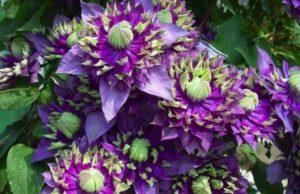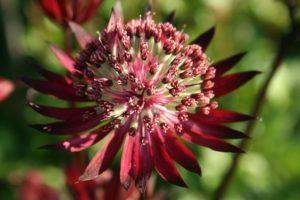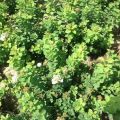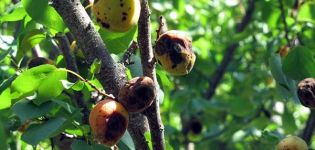Description of varieties of Japanese spirea, planting and care in the open field
Japanese gardeners fell in love with Spirea for beautiful flowers and unpretentiousness. This ornamental shrub is suitable for creating hedges and alpine slides. Breeders have bred more than 10 varieties of spirea, each of which has a different shade of flowers, length of branches and other characteristics. Moreover, each type of crop is grown according to the same rules.
General information about Japanese spirea
Japanese spirea (or meadowsweet) is a perennial plant with erect branches. Each bush is decorated with many bright flowers, collected in large shields. Regardless of the selected species, the culture quickly adapts to new growing conditions. The color of meadowsweet flowers varies widely: from white to pink and bright red.
Spirea is classified into two types: spring and autumn flowering. Each of these groups includes several varieties, including dwarf varieties, the height of the branches of which does not exceed 80 centimeters.
Varieties with a short description
Breeders have bred more than 10 varieties of Japanese spirea. The following varieties are popular among gardeners:
- Spirea Goldflame. It is characterized by small flowers and leaves that change color from brown to yellow-green during the season. The height of the bush does not exceed 80 centimeters.
- Spirea Macrophilus. A shrub with rounded leaves that turn orange, yellow and purple in autumn. The macrophile reaches one meter in height.
- Jenpei (Genpei or Genpei). A number of sources call this variety as Spirea Shirobanu. The Jenpey species is distinguished by dwarf (up to 60 centimeters) sizes and colors, the shade of which varies from pink to purple-red.
- Country ed. Eighty-centimeter shrub with erect shoots and dark pink flowers that appear in late summer.
- Golden princesses (Golden princess). The crown width and height of the bush does not exceed 50 centimeters. The leaves on the bush in the spring have a creamy yellow hue, which by summer changes to bright yellow, and in the fall to orange-red.
- Madzhik Karpet. The variety has a pillow-like appearance and leaves that change color during the season and depending on the viewing angle.
- Crispus. Compact shrub up to half a meter high. The popularity of this variety is due to the light pink flowers that stay on the branches for two months.
- Little princesses. Also applies to small shrubs.Little's popularity is attributed to the bright pink flowers that contrast with the green foliage.
In garden plots, spiraea of the varieties Neon, Flash, Darts, Albiflora are often planted. Among the popular species is Goldmound, which tolerates a drop in air temperature of up to -30 degrees.
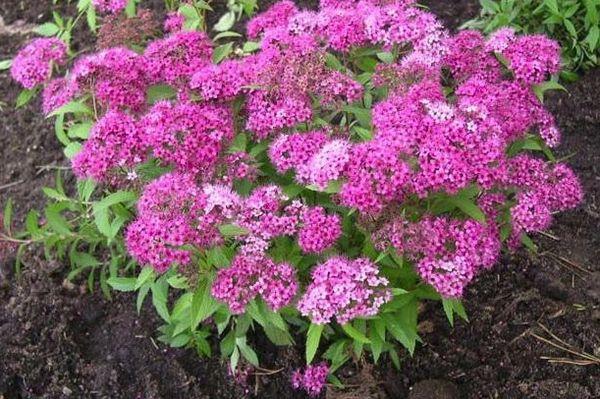
Pros and cons
Among the advantages of Japanese spirea, gardeners distinguish the following qualities:
- long (up to a month) and violent flowering;
- rich foliage color;
- a wide variety of varieties;
- unpretentiousness;
- frost resistance;
- the ability to quickly adapt to new conditions.
The popularity of Japanese spirea is also explained by the fact that the shrub can be given various decorative forms. The description of the culture should be supplemented by the fact that the plant rarely gets sick. Basically, infection occurs due to abundant watering. In addition, the shrub is easy to propagate by cuttings or branches.
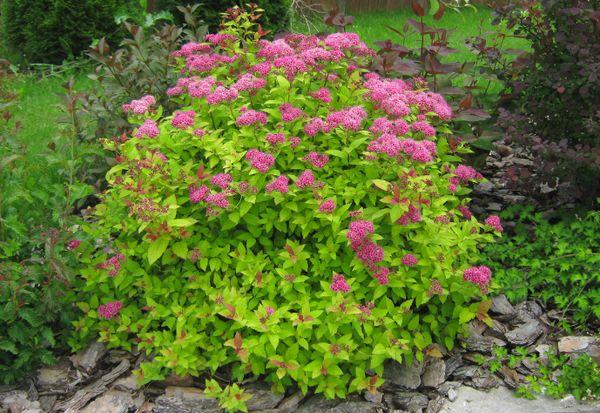
The only important drawback of culture is that Japanese spirea requires shelter for the winter.
Growing a plant
Outdoor planting is recommended in spring or autumn. Moreover, the last period is recommended for all varieties of Japanese spirea, and the first is only for late flowering, before the buds swell. If the transplant is carried out in the spring, then it is necessary to wait until the soil is completely warmed up.
Preparation of seedlings
When preparing Japanese spirea for planting, it is recommended to follow a number of rules:
- purchase seedlings with a root system covered by the ground;
- refuse to buy a plant with blossoming leaves;
- buy seedlings with light green bark, no visible damage;
- before planting, cut the roots to 30 centimeters and soak the plant.
A properly prepared plant takes root more successfully in a new place. If necessary, the roots are treated with a growth stimulator before planting. But this procedure is not required.

Site selection
Japanese spirea is recommended to be planted in well-lit areas. Due to the lack of sunlight, the shrub will not bloom. The root system of the culture is characterized by active growth. Therefore, the shrub should be planted away from other plants. The distance between adjacent spireas must exceed 50 centimeters.
Soil requirements
Japanese spirea can grow in various soils. But gardeners recommend growing the crop in mixed soils (leafy or soddy). During the preparation of the site for planting seedlings, add a drainage layer, sod land, humus, peat with low or neutral acidity and river sand to the dug hole. Also, as a top dressing, it is worth adding fertilizer intended for leaf crops. Thanks to this soil mixture, the cultivation of ornamental shrubs is simplified.

Planting
It is necessary to plant Japanese spirea according to the following algorithm:
- Dig a hole. The diameter of the hole is selected taking into account the volume of the root system, and the depth should be 40-50 centimeters.
- Pour the prepared soil mixture into the hole, and form a small hill at the bottom of the hole.
- Put a seedling on a hill in the center and spread the roots.
- Cover the seedling with soil so that the root collar remains flush with the ground.
After planting, the bush is watered abundantly. It is not necessary to apply mineral or other fertilizers during this period.
Care advice
Despite its unpretentiousness and frost resistance, care for Japanese spirea is necessary. The plant is not able to withstand prolonged drought and abundant watering. The first causes the death of the shrub, and waterlogging - the development of fungal diseases. Plant care is reduced to periodic watering, weeding and loosening of the soil.
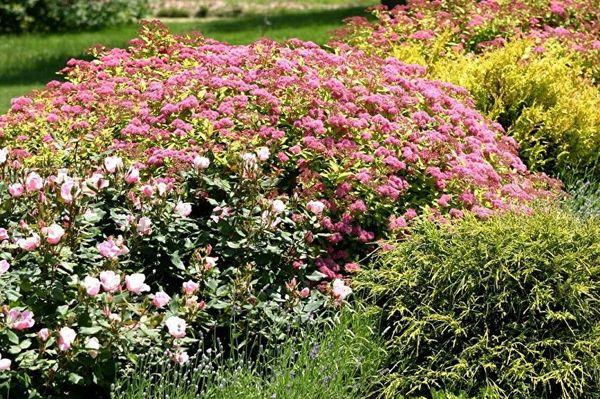
Watering
Watering frequency depends on the selected variety. Summer flowering plants consume a lot of moisture during the growing season, and spring varieties are able to tolerate short-term drought.
It is recommended to water the bush in doses. In waterlogged soil, the root system rots. In dry summers, up to 15 liters of water must be applied under large bushes, up to one bucket under dwarf ones.
Top dressing
Japanese spirea is fed twice a season. After spring pruning, it is recommended to apply mineral fertilizers under the bush. In the summer, the culture should be fed with mullein solution.

If the plant grows in depleted soils, then the spirea needs to be fed even at the beginning of autumn. At the same time, during this period, it is prohibited to apply fertilizers containing nitrogen. Such feeding stimulates the development of shoots, because of which the plant does not have time to gain enough strength for wintering and dies by next spring.
Loosening, mulching
The shrub grows well in loose soil. Such soil provides an oxygen flow sufficient for the root system. Therefore, after watering, it is necessary to loosen the ground, removing weeds.
After planting, as well as during the warm season, it is recommended to apply a layer of mulch 5-8 centimeters thick under the bush. This reduces the rate of evaporation of moisture. Gardeners use peat or dry compost as mulch.
Drafts
Japanese spirea is not afraid of drafts. Therefore, you can plant shrubs in open spaces. But due to strong gusts of wind, the process of bud formation is disrupted.
Pruning, transplanting
Japanese spirea is fast developing. In order to avoid overgrowth of the culture, it is recommended to cut off new shoots to the first buds with the onset of spring. Also, after winter, it is necessary to remove the affected and dead branches. This procedure will ensure normal plant growth. The contaminated scrap must be burned.
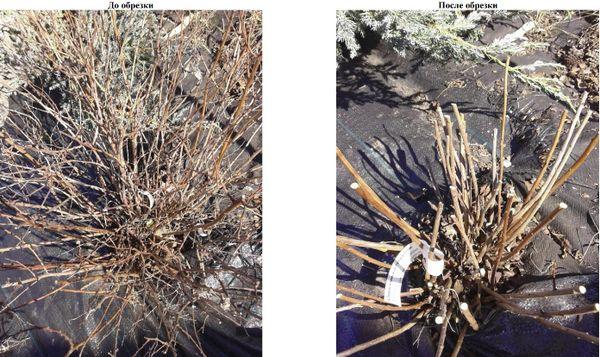
4-year-old spireas require the removal of excess length - up to 30 centimeters of each branch. This procedure allows you to achieve a more lush crown and increase the number of flowers.
You can transplant an adult shrub in the fall. The plant should be dug out, focusing on the volume of the crown. The root system usually does not grow further than the shoots are extended. It is necessary to transfer the bush to a new place along with the sod land. The soil from the old site will speed up adaptation.
Pest control and disease treatment
Japanese spirea is highly resistant to most common garden diseases. The plant is mainly affected by gray rot, which develops in waterlogged soil. Fitosporin helps to cure the shrub from this disease.

Of the pests, the most dangerous for the culture is the spider mite, which can withstand the effects of popular insecticides. This pest eats flowers. You can get rid of a spider mite with the help of Karbofos or Phosphamide.
The second most common pest is aphid, which feeds on plant sap. The leafworm, which is also often found on Japanese spirea, eats the leaves. Pirimor helps to cope with these pests.
Breeding features
Japanese spirea can be propagated in four ways:
- cuttings;
- layering;
- seeds;
- division.
The first breeding option is the most popular, as it gives results in 70% of cases. And in the case of using growth stimulants, this figure increases to 100%. To propagate the plant, it is necessary to cut off the stalk at the beginning of autumn, leaving no more than 4-5 leaves. After that, the shoot is soaked for 2-3 hours in plain water and placed in the prepared soil mixture. The cut should be placed at a depth of 2 centimeters, tilted at an angle of 45 degrees. The container with the handle is then placed in a shaded area.
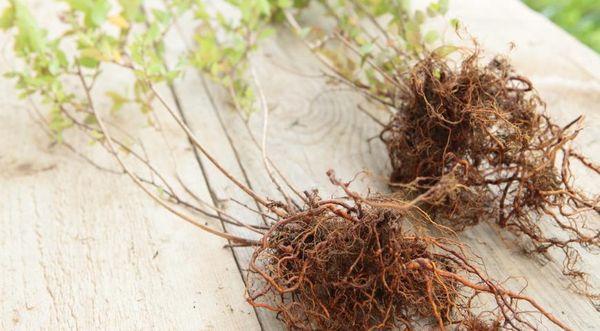
For reproduction by layering, it is enough in the spring to bend 2-3 shoots to the ground, cover with soil, leaving the tip above the surface, and press with a stone or other object. With sufficient watering, the branches will grow roots by the following spring.
Seed propagation is considered the least efficient method. This breeding method is not suitable for hybrid varieties. To propagate the shrub by this method, it is enough to sow seeds in loose soil and close the container with the material with polyethylene. After the seedlings reach two centimeters, the plant dives. And a year later, a new shrub is transplanted to the site.
Reproduction by division is possible in summer or early autumn. To do this, you need to dig in the bush, remove several strong stems and rhizomes and transfer the plant to a previously prepared place fertilized with crushed coal.
